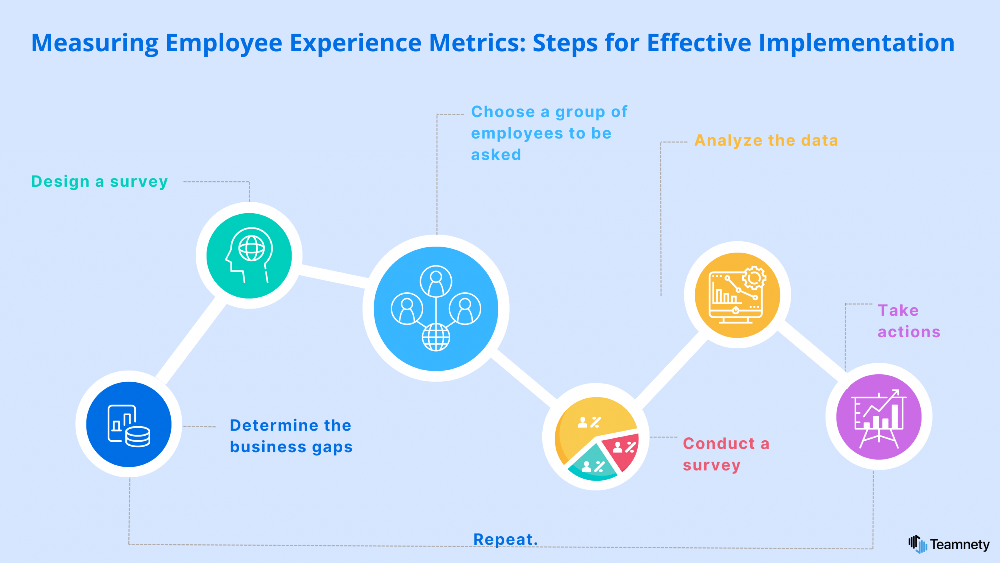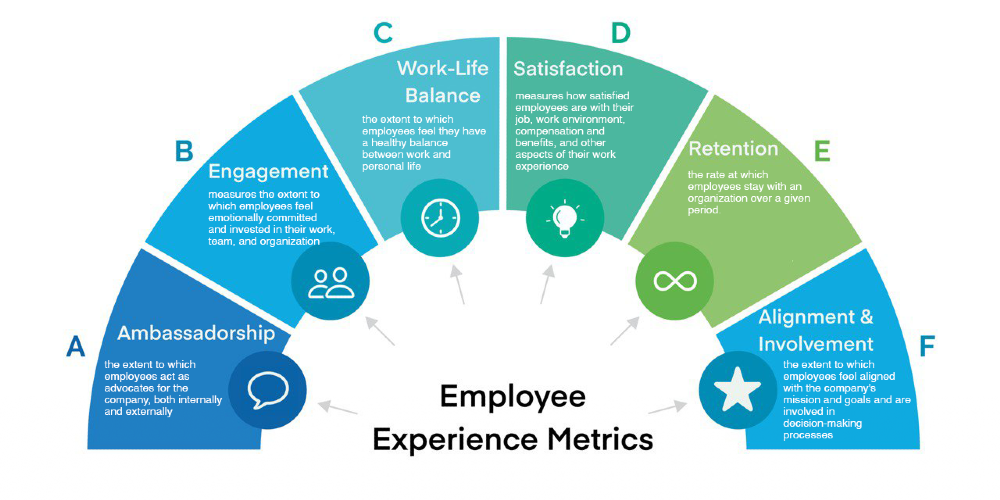Blog
Transforming business through software innovation

Understanding White Label Employee Mobile Apps
2 years ago
In the fast-paced world of today's workplaces, mobile apps have become indispensable tools for enhancing employee engagement and streamlining internal communication. While there's an array of off-the-shelf mobile apps available, businesses are increasingly turning to white label employee mobile apps for a more customized and branded experience.What is a White Label Employee Mobile App?A white label employee mobile app is a versatile solution that allows businesses to take a ready-made mobile app and rebrand it to align with their corporate identity. This means that organizations can have an app that looks and feels like it was created in-house, with their logos, color schemes, and naming conventions.Key Features and Benefits:Brand Consistency: White label apps ensure a consistent brand presence throughout your organization. Employees experience a familiar and cohesive look and feel across all company-related mobile interactions.Customization: Beyond branding, white label apps are customizable to meet specific company needs. You can tailor features and functionality to match your internal communication and engagement goals.Security and Data Protection: Reputable white label app providers offer enterprise-grade security, ensuring the protection of sensitive employee data and compliance with data protection regulations.GDPR Compliance: Your white label app can be designed to meet GDPR and other data protection standards, giving peace of mind regarding the handling of personal information.Efficient Implementation: White label apps can be implemented relatively quickly, reducing the time and cost compared to developing a custom app from scratch.Custom Features and Integrations: White label apps can accommodate custom features and integrations, allowing you to connect with your existing systems and meet unique organizational requirements.Is a White Label Employee Mobile App Right for Your Business?A white label employee mobile app is an excellent choice for organizations looking to elevate their internal communication, employee engagement, and brand consistency. It offers the best of both worlds: a customizable, branded app without the development costs and time associated with building one from the ground up.Whether you are a large corporation, a small business, or somewhere in between, a white label employee mobile app can be a valuable addition to your toolkit for fostering a more connected, engaged, and cohesive workforce.If you're considering the adoption of a white label employee mobile app for your organization, reach out to experts in the field for guidance and to explore the options available. The right solution can transform your internal communication and employee engagement, taking your workplace experience to the next level.

Measuring Employee Experience Metrics: Steps for Effective Implementation
2 years ago
Measuring Employee Experience Metrics (EХ) is crucial to improve the overall work environment and employee engagement. Employee experience management software can help organizations measure EХ effectively by streamlining the process and providing actionable insights. In this article we will look at the key steps that can help organizations effectively measure EХ with or without employee experience management software Step 1. Determine the metrics to measure: The first step is to determine which EХ are important for the organization. This involves identifying the specific areas of employee experience that the company wants to improve. Employee experience management software can help in this process by providing pre-built surveys and assessments tailored to specific EХ metrics. Check out our article about different employee experience metrics and how each of them can help solving different business issues. Step 2. Design a survey: Once the metrics have been identified, the next step is to design a survey that will gather feedback from employees. You will need around 10 questions on the interested topic.There are several types of questions that can be used in an employee survey to measure different aspects of the employee experience. Here are a few examples: Open-ended questions: These questions allow employees to provide free-form responses and can be useful for capturing qualitative feedback. For example, "What do you like most about working at this company?" or "What changes would you suggest to improve your work experience?" Likert scale questions: These questions use a scale of responses to measure employee attitudes or opinions. For example, "On a scale of 1-5, how satisfied are you with your job?" or "How strongly do you agree or disagree with the following statement: 'I feel supported by my manager.'" Multiple choice questions: These questions provide a set of predetermined response options and can be useful for measuring specific aspects of the employee experience. For example, "Which of the following benefits is most important to you?" or "Which of the following training programs would you be interested in attending?" Demographic questions: These questions gather information about employee demographics, such as age, gender, education level, and job title. This information can be useful for analyzing survey results and identifying trends or patterns across different groups of employees. It's important to use a mix of these question types to gather both quantitative and qualitative data and to ensure that the survey covers all aspects of the employee experience that the company wants to measure. Additionally, it's important to keep the survey questions clear, concise, and focused to ensure that employees understand the purpose of the survey and are able to provide meaningful feedback. Employee experience management software can provide customizable survey templates and a user-friendly interface that makes it easy to design and distribute surveys. Try our ready to use surveys in 11 different categories for free. Step 3. Choose a group of employees to be asked: After designing the survey or choosing one in the platform, the next step is to select a representative group of employees to participate in the survey. When selecting representatives for employee engagement surveys, it's important to ensure that the group is diverse and representative of the overall workforce. Here are some types of representatives that can be included: Department or team representatives: Representatives from each department or team can be selected to ensure that the survey captures feedback from all areas of the organization. This can also help identify department-specific issues and opportunities for improvement. Role-based representatives: Representatives from different roles or job levels can be included to ensure that the survey captures feedback from employees at all levels of the organization. This can help identify issues and opportunities for improvement that may be specific to certain roles or job levels. Geographic representatives: If the organization has multiple locations, representatives from each location can be included to ensure that the survey captures feedback from employees in all locations. This can help identify location-specific issues and opportunities for improvement. Diversity and inclusion representatives: Representatives from different demographic groups, such as age, gender, race, and ethnicity, can be included to ensure that the survey captures feedback from a diverse range of employees. This can help identify issues and opportunities for improvement related to diversity and inclusion. Volunteer representatives: Employees who volunteer to participate in the survey can also be included to ensure that the survey captures feedback from employees who are motivated to provide input and may have valuable insights to share. It's important to ensure that the group of representatives is not too large, as this can make it difficult to analyze the survey results and identify meaningful insights. A representative group of 10-15% of the workforce is typically sufficient to capture a range of perspectives while keeping the group manageable. Step 4. Conduct a survey: The survey should be conducted in a way that is convenient and accessible to employees, such as online or via mobile devices. Teamnety employee experience management software provides a platform with mobile app for distributing surveys and tracking responses in real-time. Step 5. Analyze the data: After collecting the data, it's important to analyze it to identify trends, patterns, and areas for improvement. This can involve using statistical analysis, data visualization tools, and other techniques to make sense of the data. This step may require customizable dashboards to make all the information easy to read and analyze, as well as see the changes in dynamic. Step 6. Take specific actions: Based on the results of the survey, the company can identify specific actions that need to be taken to improve EХ. These actions should be prioritized based on their potential impact and feasibility. Step 7. Conduct surveys on a regular basis and monitor progress: To ensure that progress is being made, it's important to conduct surveys on a regular basis and monitor progress over time. Teamnety HR Platform automates this process by scheduling surveys and tracking changes in EХ metrics over time. Step 8. Take actions if needed again: If the results of the follow-up surveys indicate that the actions taken have not been effective, it's important to take additional actions to address the issues identified. By following these steps, companies can effectively measure EX metrics, identify areas for improvement, and take specific actions to create a positive and engaging work environment for employees. This can lead to improved business outcomes, increased employee satisfaction, and a competitive advantage in the marketplace.

What makes a well-performing employee? Employee Experience Metrics to start with
2 years ago
Measuring employee experience is critical for understanding and improving the overall work environment, employee engagement, and business outcomes. We have discussed earlier what the employee experience metric is but let's recall the definition. Employee experience metrics are a set of quantitative and qualitative measurements used to assess employees' attitudes, emotions, and perceptions towards their work environment, colleagues, and the organization as a whole. Measuring employee experience metrics helps businesses identify areas where they can improve their employees' work experience, leading to a more engaged, satisfied, and productive workforce. Employee experience metrics can be categorized into four main types: Recruitment Metrics. Recruitment metrics measure the effectiveness of the hiring process and candidate experience. These metrics include time-to-hire, cost-per-hire, candidate satisfaction ratings, and applicant drop-off rates. Measuring these metrics can help companies identify bottlenecks in the recruitment process and make improvements to attract the right talent. Onboarding Metrics. Onboarding metrics measure the effectiveness of the onboarding process and employee satisfaction during their first few months on the job. These metrics include employee engagement scores, time-to-productivity, and turnover rates during the probationary period. By measuring these metrics you can check if your new workers are getting all the neccessary support and information to quickly adopt to their new roles and perform better. Engagement Metrics. Engagement metrics measure how engaged and satisfied employees are with their work and the company overall. These metrics include employee satisfaction scores, employee net promoter scores (NPS), employee retention rates, and absenteeism rates. Measuring these metrics can help companies identify areas where employees need more support and make improvements to boost engagement and retention. Performance Metrics. Performance metrics measure the productivity and effectiveness of employees. These metrics include individual and team performance goals, productivity metrics, and customer satisfaction ratings. Measuring these metrics can help companies identify top performers and areas for improvement, and develop targeted training and development programs. If you are new to integrating into EEM, there are several important categories to consider in order to gain an understanding of your staff's emotions and morale: Employee Net Promoter Score (eNPS) or employee ambassadorship: eNPS measures how likely employees are to recommend their organization as a great place to work. This metric is calculated by subtracting the percentage of employees who are detractors (score 0-6) from the percentage of employees who are promoters (score 9-10) and multiplying by 100. A high eNPS score indicates that employees are satisfied with their work environment and would recommend it to others, which can help attract top talent to the organization and reduce turnover rates. Employee Engagement: Employee engagement measures the extent to which employees feel emotionally committed and invested in their work, team, and organization. Use surveys, focus groups, or interviews to measure engagement. Some common questions to ask when measuring employee engagement include: "Do you feel proud to work for this organization?" "Do you feel like your work is meaningful?" "Do you find your manager and colleagues supportive and friendly?"High employee engagement can lead to increased productivity, better customer service, and a positive impact on the bottom line. Employee Satisfaction: Employee satisfaction measures how satisfied employees are with their job, work environment, compensation and benefits, and other aspects of their work experience. This metric can be measured through surveys, feedback sessions or one-on-one meetings with employees. Regularly measuring employee satisfaction can help businesses identify areas where improvements can be made to enhance their employees' overall experience For example, if employees consistently report dissatisfaction with their compensation and benefits, the business may need to reassess their compensation packages to ensure they are competitive in the market and meet employees' needs. Employee Retention: Employee retention measures the rate at which employees stay with an organization over a given period. High employee retention is generally a positive sign, as it suggests that employees are happy with their work environment and feel valued and supported. Regularly conducting exit interviews can help businesses identify the reasons why employees leave and make improvements to address any underlying issues. Implementing strategies to improve employee retention can help businesses save on recruitment and training costs, maintain a stable workforce, and foster a positive company culture. Employee alignment and involvement: Employee alignment and involvement measure the extent to which employees understand their role in achieving organizational goals and feel involved in the decision-making of the key business processes. This metric can be measured through surveys, focus groups, or other methods that gather feedback from employees. By regularly measuring employee alignment and involvement, businesses can ensure that their employees are working towards shared goals and feel empowered to contribute their ideas and opinions to the business. Work & Life Balance: Work and life balance metrics measure . This metric can be assessed by measuring employee participation in flexible work arrangements, their feedback on the effectiveness of those arrangements, and their ability to maintain work-life balance. By measuring this metric, companies can identify opportunities to enhance work-life balance, such as flexible work arrangements and time off policies. Improving work-life balance can lead to increased employee retention, improved job satisfaction, and better mental health. Do you know your Employee Satisfaction Rate? Let's start measuring! By measuring these employee experience metrics, companies can identify areas for improvement and develop strategies to create a positive and engaging workplace culture that attracts and retains top talent.